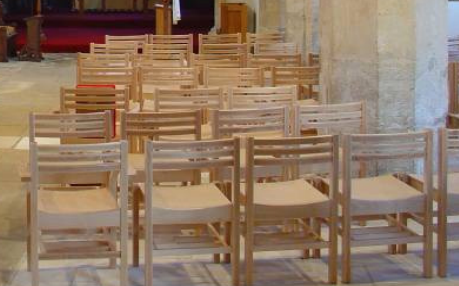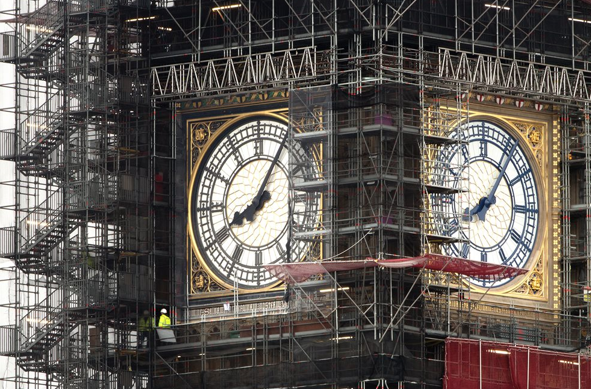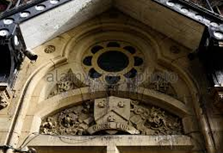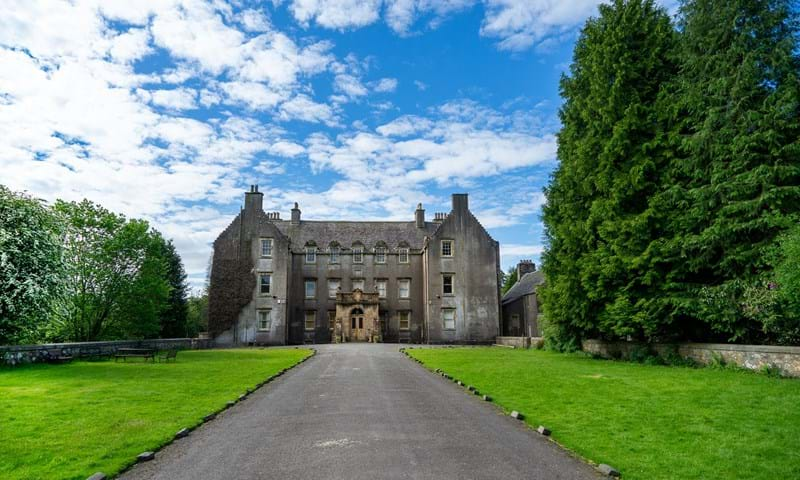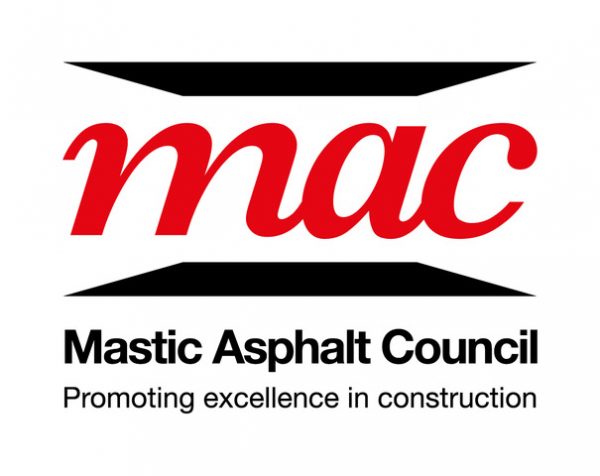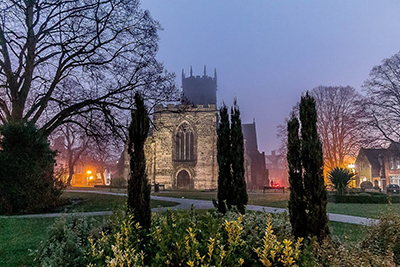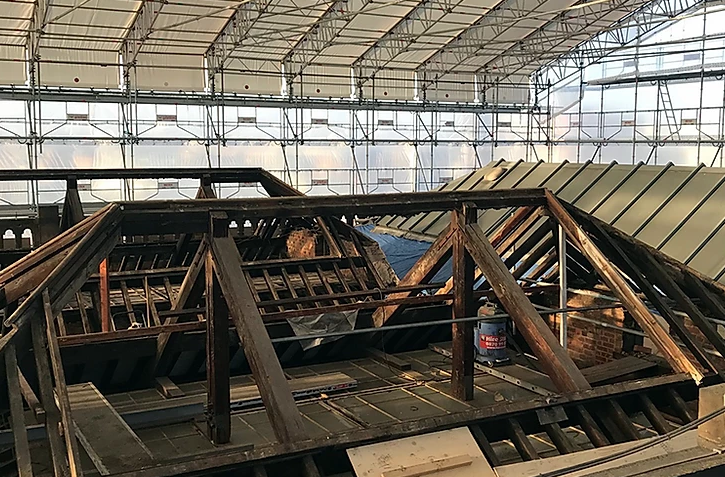War Memorials
War Memorials Trust works to protect and conserve war memorials in the UK. The charity provides free advice to anyone as well as running grant schemes to support repair and conservation projects. You can find a range of resources on the website http://www.warmemorials.org/ to help you engage with our unique war memorial heritage. The Trust is a charity so if you support our work please consider making a donation.
Lead Contractors Association
 Members offer 25 years peace of mind
Members offer 25 years peace of mind
The trade body that represents the leadworking industry – and guarantees quality in that industry – is the Lead Contractors’ Association (LCA). The LCA was formed in 1984 to promote quality standards in leadwork and now comprises over 70 specialist contractors committed, supported by 15 associate members who supply materials and ancillary services.
Members comprise every business model, from sole traders and partnerships to established corporate bodies. Whether they employ their own workforce or engage teams of subcontractors, members are required to take full responsibility for the purchase and application of the lead sheet under their control.
Members work to an approved Code of Practice (BS 6915) and recommendations set by the Lead Sheet Association. Those standards are guaranteed by an annual vetting programme that includes compulsory on-site inspection of workmanship and design.
Read More...
Insurance
You need to ensure that reasonable precautions are in place at your church to keep it safe for those who use it. To do this, you need to think about what might cause harm to people.
You will then need to decide if the precautions already in place are adequate. If they are not, you may need to identify further action to prevent any danger. When done formally, this is known as a risk assessment.
Where you are an employer, you must complete these and they will need to meet specific requirements. In particular, they must identify the steps you need to take to comply with relevant health and safety regulations.
It is worth remembering that even if you are not an employer but own or control premises, you may still have to complete detailed risk assessments for certain hazards, for example, asbestos. These will have to meet specific requirements and in some cases you may need specialist assistance with this.
Church Seating
Seating guidance from ChurchCare
One of the most frequent changes made to churches today will involve seating in some way. Changing seating inside a church can have a significant impact upon the interior. The process of changing furniture, as well as choosing a suitable alternative, requires careful consideration. ChurchCare publish a document intended to guide parishes through the planning stages and the decisions involved.
Heritage Alliance
Heritage bodies set out election Manifesto
Ahead of the next UK general election, the Heritage Alliance – a coalition of 200 heritage organisations in England – has published its 2023 Heritage Manifesto, demonstrating how heritage provides solutions to a range of public policy challenges and setting out a vision for the sector under the next term of government.
The Heritage Manifesto has been created to draw attention to the key policy measures needed to ensure the future of our shared heritage. It urges all major political parties to adopt a five-point plan to not only protect our heritage, but also to maximise the benefits it can create for communities and the environment.
Lightning Protection
 When lightning strikes are you protected against this act of God?
When lightning strikes are you protected against this act of God?
The nature of church architecture means they are particularly prone to lightning strikes. The very act of projecting the building towards heaven with a tower or spire – to glorify God and to act as a landmark for miles around – works towards them attracting lightning.
The issue of lightning protection in churches is one that has exercised this publication for many years. In this four-part series of spotlights on the issue we will be revisiting various aspects of the subject, beginning with an overview of current thinking.
The nature of church architecture means they are particularly prone to lightning strikes. The very act of projecting the building towards heaven with a tower or spire – to glorify God and to act as a landmark for miles around – works towards them attracting lightning.
Rainwater Goods
 Care and maintenance of rainwater goods
Care and maintenance of rainwater goods
'Rainwater goods' is a term that covers a variety of different means of shedding rainwater away from a building. Most commonly seen as attached iron guttering, rainwater goods can also be incorporated, unseen, into the building’s fabric, behind parapets and within walls.
The need to shed rainwater away from the walls has been recognized for a long time. Medieval churches are famed for their decorative gargoyles and impressive spouts, simple yet effective ways of doing the job. However, in a modern urban setting these means of draining a roof would be rather hazardous for passers-by and churches are more commonly seen with guttering, chutes and downpipes.Once the water reaches the ground in an urban or suburban church it will enter the sewerage system via underground gullies. In rural churches, which are often not served by mains drainage, gullies normally lead to soakaways.
Fire Guidance
Fire guidance for churches and heritage buildings
Fires in churches and heritage buildings have a number of causes and can have devastating consequences – not only in terms of damage to property, but also as the cause of serious injury and even loss of life.
The Regulatory Reform (Fire Safety) Order 2005 requires all premises to undertake a comprehensive risk assessment to identify any possible dangers and risks, as well as the people who may be at risk. Leading church insurer Ecclesiastical Insurance and the Fire Industry Association offer advice on both the prevention of fire and the protection necessary should a fire occur.
Ecclesiastical Insurance has produced a guide for church authorities to help them undertake such a risk assessment and to minimise the risk of fire in their buildings. The guide identifies a number of common causes of fires and offers advice on steps to take to combat them.
Church Maintenance and Repair
Church maintenance and repair: Calendar of Care
Just as prevention is always better than cure, maintenance is preferable to major repairs. But, such repairs may not always be avoidable. Church Care offers a monthly guide in our coming issues Starting in Spring
We can help you understand the common problems and areas that need your special attention, and give you tips for regular maintenance schemes.
London’s Heritage
London is one of the world’s most famous cities. It’s a centre for everything from fashion to finance, politics to pop music, and monarchy to the media – and it’s been at the heart of English history for thousands of years.
Town Halls
The history of the great Victorian Town Halls of Northern England
From industrial squalor to civic pride, the story behind some of the most impressive buildings of the North involve a unique mix of economics, grand designs and noble sentiments within communities.
Conservation Specialists
Finding professional help from conservation specialists, including architects
There are a number of professions that can help you plan and carry out work to an old building. Going it alone without the help of experienced and qualified professionals in order to save money often proves to be a false economy. It's worth thinking about what help will benefit your project early on.
- What professional help do you need?
- The advantages of using professionals
- Preparing for the work to start
Natural Stone
Identifying and sourcing stone for repair
England is fortunate to have such a wide variety of historic and older stone buildings. However, there has been a marked decline in the range of natural stones that are being actively quarried.
Cathedral Care
Restoration and upkeep of cathedrals
There are some 42 Anglican cathedrals in the UK, not to mention 20 or so Catholic cathedrals. Cathedrals form the most important collection of historic buildings in England. The largest and most ancient are internationally famous, the smallest are usually among the most significant buildings in their region and even the most recent are architectural masterpieces.
Pest Control
Michael Palin warns of pest threat to churches
Michael Palin is supporting the future of the UK’s historic churches and chapels with a voiceover for a new animated film. The 80 second animation, produced for the National Churches Trust, highlights why churches are some of the nation’s best loved buildings.
Energy Efficiency
Sustainability and energy efficiency in historic buildings and churches
Historic England supports the Government’s aims to improve the energy efficiency of existing buildings through Part L of the Building Regulations. Many improvements can be carried out, often at a relatively low cost, significantly enhancing the comfort of the building for its users, as well as providing savings on fuel bills and helping to meet greenhouse gas emission reduction targets.
Scottish Heritage
£240,000 boost for communities as Scottish heritage projects awarded funding
Funding to provide training opportunities and the restoration of historic structures will benefit local communities and economies throughout Scotland.
A historic Tolbooth steeple in Fife, the B-listed former Govanhill Picture House and a traditional skills training programme targeting disadvantaged people in Perth and Kinross are just some of the latest projects set to benefit from funding from Historic Environment Scotland (HES).
Painting and Decorating
Redecorating listed buildings and places of worship
If you are thinking of redecorating the interior of your listed building or place of worship seek the advice of your architect or surveyor as implications of redecoration can be far reaching. There may well be technical aspects that need to be addressed before decoration can be carried out successfully. Redecoration can also have a major impact on the appearance of your building, including the way it looks and feels for worship.
Think Brick
 Proven reliability over the centuries - and annual awards are back
Proven reliability over the centuries - and annual awards are back
Brick is one of our oldest building materials and its use dates back to the beginning of civilisation.
The Brick Development Association represents the United Kingdom and Ireland’s clay brick and paver industries and promotes the contribution that brick makes to the places and spaces we live and work in today. Their role is to ensure clay brick and pavers are recognised as the material of choice by architects, engineers, planners, specifiers, developers, landscapers, builders and property owners.
The Brick Development Association conducts lectures and CPDs with students and practising architects and engineers and through it’s marketing arm, Think Brick, communicates the benefits of brick to a wider audience on-line, through advertising and PR and through the annual Brick Awards.
Traditional Windows
Traditional windows - their care, repair and upgrading
The loss of traditional windows from our older buildings poses one of the major threats to our heritage. Traditional windows and their glazing make an important contribution to the significance of historic areas.
Mastic Asphalt
An introduction to the Mastic Asphalt Council (MAC)
The Mastic Asphalt Council (MAC) is the trade association for the UK mastic asphalt industry. MAC represents more than 90 companies - including mastic asphalt manufacturers, the contractors responsible for its installation, and associated suppliers of equipment and services.
Church Heating
Safe use of church heating systems
The average Anglican church is a tricky place to heat. This guidance from insurers Ecclesiastical provides advice on the safe and efficient use of various church heating systems.
Churches usually have large internal spaces, high ceilings and, putting the more modern churches to one side for the moment, the construction of its doors and leaded windows will make it difficult to insulate. A well-maintained heating system is important – which means conducting a number of checks throughout the year. Furthermore, from an insurance perspective, heating systems create several risks of their own, of which trustees need to be aware.
Church Lighting
Light up your place of worship
The design of a lighting scheme and the light fittings themselves can have a positive impact on the way your building looks as well as being functional.
Uniformly bright lighting throughout your historic place of worship will generally not be appropriate. Historically, interiors were lit by daylight and supplemented by candles, oil or gaslight. Many spaces within historic architecture were not intended to be lit. Illuminating features such as roof structures can potentially disrupt the character of the space and so is not always suitable.
The most sympathetic lighting, therefore, will simply reinforce natural light in the daytime, while night time lighting will reflect historic methods of illumination. If you need advice on new lighting, we recommend using independent consultants rather than lighting suppliers or contractors. We also encourage you to involve your Inspecting Architect.
Live Streaming
Why live stream is now mainstream
The restrictions around the COVID-19 pandemic have led to many churches venturing into the online world in a much more comprehensive way than before. While most churches have had some kind of online presence and the Church of England has it’s a Church Near You site, the live streaming of services has become much more common. And modern AV equipment is perfectly suited to communicating via the internet.
An irony is that many churches have found that they can now reach people who had been excluded by physical illness or disability from attending church services, and have acquired a whole new congregation.
Decorative Leadwork
Saving the artistry of early craftsmen
Beaten, twisted, cut or cast, ornate designs bear out the skill and artistry of early craftsmen. And surviving examples are under threat.
The artistic skills of the leadworker have typically found expression on rainwater heads, downpipes, water cisterns and roof embellishments, as well as statuary.
Tree Care
Tree care and planting in the church and heritage sector
According to a report in The Independant the UK will have to plant 1.5 billion trees if it is to tackle climate change. The London Tree Officers Association has this to say on the subject: "Future Governments are committed to planting trees to reduce carbon emissions, however there is concern that some of these proposals are focussed on a rapid increase without considering the intricate steps that are required to ensure that trees establish and thrive and it is important that this is made clear to avoid good intentions resulting in failure."
Professional advice and expertise needs to be sought and implemented.
To start the programme, Defra recently announced £50m available to farmers and land managers to create new woodlands to help tackle the effects of climate change.
Lead Roofing
Lead is one of the oldest materials in the roofing industry and is still commonly used throughout the world today.
Lead roofing is a traditional roofing method which has been used in the industry for hundreds of years, and is therefore proven to be extremely reliable. Lead roofing, and sand-cast lead, in particular is ideal for old buildings such as churches or historical renovations, whereas milled lead roofing is a mass-produced alternative, used for precision and accuracy in homes and commercial buildings alike.
Alternatively, machine cast lead offers a very similar finish to milled and can be more cost-effective.
In light of this, it is safe to say that lead has proven itself to be a reliable and durable material, excellent for roofing purposes. So let’s take a closer look at the benefits you can receive from a lead roof
CRE Events
Exhibitors enthuse over the CRE experience
By 4pm on the first day of CRE 24 at the Marshall Arena in Milton Keynes, exhibitors Chris and Kim Dunphy had already had so many helpful and detailed conversations with visitors that they were “completely talked out”.
Heritage Training
Skills for the future to safeguard the past
Ecclesiastical and Heritage World have a selection of heritage training providers listed within our online directory offering a wide range of courses.
Heritage Roofing
Heritage roofing - maintaining our iconic buildings
The UK is home to some of the most iconic buildings in the world, from stunning churches and cathedrals to historic stately homes. Each and every one of these remarkable feats of architecture requires regular maintenance to ensure they remain in the very best condition, allowing them to be enjoyed for generations.
Leadworker Register
The Leadworker Register - putting skills at the heart of the industry
The Lead Sheet Association has been developing and running successful training and qualification initiatives for many years to help ensure that standards of leadwork are high across the construction industry.
As well as delivering courses at its Training Centre in East Peckham, Kent, the LSA has also been working in collaboration with the Lead Contractors’ Association to set up the Leadworker Register.
One of the reasons the LSA felt the creation of the Leadworker Register was important was for many years it has been asked by a range of people to provide details of competent leadworkers. It felt the fairest way to do this was through a Register which is transparent and allows contractors, specifiers, architects and others in the construction industry to find the level of skills needed for the job in hand.
Ironwork
A guide to architectural metalwork, wrought iron and its restoration
Our next issue will feature a fascinating insight, exploring metallurgy, production techniques, its architectural and historical context and best practice conservation.
Wrought iron, normally produced from pig iron, is a ferrous carbon alloy with a significantly lower carbon content (less than 0.1%) than cast iron or steel. Wrought iron is produced with slag inclusions (the top layer of melt formed during smelting containing oxides and other impurities) which gives wrought iron a characteristic fibrous nature.
Read More...
Stained Glass
A brief history of stained glass
The origins of the first stained glass windows are lost in history. The technique probably came from jewelry making, cloisonné and mosaics. Stained glass windows as we know them, seemed to arise when substantial church building began.
By the 10th century, depictions of Christ and biblical scenes were found in French and German churches and decorative designs found in England.
There is a mystery to glass: It is a form of matter with gas, liquid and solid state properties. Glass is most like a super-cooled liquid. It captures light and glows from within. It is a jewel like substance made from the most ordinary materials: sand transformed by fire.
Audio Visual
Audio visual equipment in church buildings
This guidance is issued by the Church Buildings Council under section 55(1)(d) of the Dioceses, Mission and Pastoral Measure 2007. As it is statutory guidance, it must be considered with great care. The standards of good practice set out in the guidance should not be departed from unless the departure is justified by reasons that are spelled out clearly, logically and convincingly.
The majority of Anglican churches now use audio visual equipment as part of regular services. The technical specification for any fixed installation is crucial and will depend on your building and usage.
Seek professional advice from an independent adviser, and make early contact with your DAC Secretary to discuss any new scheme. The technical details will be unique to each church, but there are some general principles to consider when looking at new installations which impact on the fabric and appearance of the church.
The majority of Anglican churches now use audio visual equipment as part of regular services. The technical specification for any fixed installation is crucial and will depend on your building and usage.
Seek professional advice from an independent adviser, and make early contact with your DAC Secretary to discuss any new scheme. The technical details will be unique to each church, but there are some general principles to consider when looking at new installations which impact on the fabric and appearance of the church.
FTMRC
Working in partnership is key to success
This was the key theme in the chairman's introduction to the recent FTMRC statement. Chairman, Trevor Corser, also managing director of JTC Roofing Contractors Ltd, said:
"Taking on the challenge of becoming FTMRC Chairman, a rapid realisation dawns (although I had always suspected it) that no matter how brilliant or dynamic the individual...
"Since our formation at the end of 2006 (yes I know only eight years – incredible isn’t it?) we have achieved so much because we have a strong, innovative and forward thinking Council backed up by a very professional secretariat. Pooling and focusing those varied individual resources creates a dynamic and purposeful unit that is determined to see the FTMRC succeed.
Heritage Crime
The development of the Heritage Crime Programme in England
Mark Harrison, Head of Heritage Crime Strategy at Historic England, outlines the development of their Heritage Crime Programme.
Historic England defines heritage crime as: "Any offence which harms the value of England's heritage assets and their settings to this and future generations."
Harm caused to a heritage asset by crime or anti-social behaviour will often have both direct and indirect impacts. For example, the loss of historic fabric from a listed building through theft or vandalism will not only have a direct impact by damaging the fabric of the building itself. It can also have an indirect impact such as social or economic loss to the amenity of an area.
Lead Training
 Training at the Lead Sheet Training Academy
Training at the Lead Sheet Training Academy
The Lead Sheet Training Academy is at the forefront of training for those using lead or hard metals in the construction industry.
To deliver this training the LSTA operates from a state of the art, purpose-built training facility in East Peckham, Kent which is open six-days a week for most of the year. The training centre includes full scale training rigs and resources as well as providing a well-equipped environment in which to learn as it re-creates real-life situations. If suitable premises are available, we can also deliver basic courses in lead and hard metals at locations around the UK.
The centre is recognised as a CITB Approved Training Organisation. Our tutors are experienced trainers, holding qualifications in leadwork, hard metals and teaching, have experience of working on-site and are CITB-approved assessors. CITB grants are available to meet most course fees for employees of CITB-registered construction businesses. LSTA can offer pay-as-you-learn charges for courses longer than 5-days.
National Trust
 National Trust building conservation programme
National Trust building conservation programme
The National Trust protects historic buildings and buildings in the wider landscape. Their team works hard to ensure they are preserved forever and for everyone, using traditional conservation techniques.
Our special places need a lot of looking after and you can read more about some of our most ambitious conservation and restoration projects in the next issue of this magazine. Ecclesiastical and Heritage World’s Autumn issue will feature a spotlight on the National Trust Restoration Programme with case study examples of some of the magnificent conservation and restoration successes old and new. Support and contributions from specialists nationwide is welcome.
From Northumberland to Kent and across to Wales, the National Trust has a number of highly ambitious conservation projects - both current and planned - including at Hardwick Hall in Derbyshire.
ISCVE
 Promoting technical excellence
Promoting technical excellence
ISCVE is a specialist Learned Society and professional body for sound and communications engineers. Founded in 1948, it is an entirely independent Institute, run by a Council elected by its members. Members maintain a code of conduct in professional activities, embodying high ethical standards and concern for the environmental and sociological impacts of professional activities.
Members of the Institute are professionals from the field of audio – especially public address, voice alarm, sound system, audio frequency induction loop system, audio-video or acoustics – who maintain a code of conduct in professional activities.
Membership includes consultants, manufacturers and specialist installers who are all able to engage with an end user or their architectural advisors to develop and deliver solutions in even the most demanding of buildings.
Click here for further information
Membership includes consultants, manufacturers and specialist installers who are all able to engage with an end user or their architectural advisors to develop and deliver solutions in even the most demanding of buildings. Contact with members in most areas of the UK is available via its website or the secretariat.
Church Loop Systems
 Hearing loops – why your venue should have one
Hearing loops – why your venue should have one
Hearing loss is the second most common disability in the UK. The number of people affected is increasing and estimates suggest that by 2035, 15.6 million people in the UK will have hearing loss – that’s one in five of the population. Like every public building, places of worship and heritage venues should be accessible to people with hearing loss, as leading specialists in the field Contacta explain.
What is a hearing loop?
A hearing loop delivers the sound from a sound source such as a microphone, direct to a user’s hearing aids. It amplifies only the sound a listener wants to hear and not the background noise. It helps hearing aid users hear clearly in noisy environments or when they are far away from the sound source, and out of the effective listening range of their hearing aids.
Heritage East Midlands
 In the midst of things – that’s the legacy of the East Midlands
In the midst of things – that’s the legacy of the East Midlands
It is perhaps a little-known fact that the region in England we think of the as the loose conglomeration of the East Midlands actually has an official identity: it is one of the regions of the UK recognised by the EU as one of Europe’s Level One “nomenclatures d'unités territoriales statistiques”, or NUTS. Officially, the East Midlands comprises Derbyshire, Leicestershire, most of Lincolnshire, Northamptonshire, Nottinghamshire and Rutland.
Historically, of course, the East Midlands region is much more than a device of the EU to find convenient parcels to divide Europe into. Many of England’s strategic decisions have been taken there – often on the battlefield, but also diplomatically. Richard III fell there – the last English king to lead his troops into battle.
Master Carvers
 Carving out an enviable reputation
Carving out an enviable reputation
The Master Carvers Association was founded in 1897 as an employers association, by a number of companies who employed carvers, to enable national negotiations with the emerging unions.
In 1992 the rules of the Association were changed to enable individual self-employed carvers to become members.
Then, to widen the scope of the association, in 2009 the rules were changed once again to create a third category of membership: associate member. This category is open to budding carvers and others who have a particular interest or contribution to make to professional carving.
Drone Surveys
 Your surveys no longer need to be done on a wing and a prayer
Your surveys no longer need to be done on a wing and a prayer
The use of unmanned aerial systems (UAS) is rapidly expanding as the carers and keepers of old buildings and churches learn how much easier and more cost-effective completing surveying and maintenance projects can be with the professional use of drones.
The use of such machines has proved revolutionary in carrying out surveys of areas in ancient buildings and churches which had previously required extensive preparation, followed by expensive and in some cases hazardous operations. Indeed, in some churches there are parts of the building that had not hitherto been accessed at all for many years.
Unmanned aerial vehicles (UAVs), or drones, can vastly reduce the time spent on projects by collecting accurate data in a much shorter timeframe. Because of this, their ROI is considerable. But there are other benefits, too. Drones also eliminate the need for humans to physically access hard-to-reach and dangerous terrain. To put it simply, UAS technology makes access more efficient, profitable, and safe.
Yorkshire Heritage
 Craftmanship flourishes in ancient York - and throughout the remarkable county
Craftmanship flourishes in ancient York - and throughout the remarkable county
The massive presence of the tower atop York Minster dominates the skyline far beyond the borders of that ancient city. It forms the centre of a diocese that encompasses what used to be by far the largest county in England and once included counties across the Pennines and as far as the Cheviots.
The Minster still acts as a hub for one of the largest concentrations of craftspeople in the country, with ancient skills that have kept our cathedrals and other treasured buildings in operation for centuries.
In the next issue of Ecclesiastical & Heritage World we will be offering a glimpse into the world and work of these craftspeople, including the select band of members of the York Consortium for Conservation and Craftsmanship.
Cathedral Anniversaries
2020 is Year of Cathedrals, Year of Pilgrimage
2020 has been designated Year of Cathedrals, Year of Pilgrimage as it brings together a remarkable number of individual English cathedral anniversaries that help tell Britain’s story and will also see a host of new pilgrimage routes opened.
Many cathedrals are already planning major celebrations – Canterbury, Peterborough, Portsmouth are all remembering Thomas Becket, Lincoln Cathedral celebrates 800 years of St Hugh, Salisbury commemorates the 800th anniversary of the founding of its city and its iconic cathedral, St Edmundsbury celebrates 1,000 years anniversary of the Abbey, and Coventry Cathedral will remember the 80th anniversary of the bombing of the old cathedral during the Blitz.
Listed Property Show
 The place to be if your property is listed
The place to be if your property is listed
This year's Listed Property Show, organised by the Listed Property Owners' Club (LPOC) will take place at London's Olympia on 20-21 February and at the Harrogate International Centre on 12-13 March.
Over 150 of the country's leading experts will be at the shows to give advice and guidance. Many will be giving practical demonstrations, including woodcarving, leadwork, plasterwork, window and door manufacturing and much more. Other exhibitors include English Heritage, architectural historians and many commercial suppliers of products particularly suitable for period homes.
There will also be three independent conservation officers at the exhibition, who will happily discuss any plans owners may have for altering or extending their property. All owners of listed properties know the process of obtaining permission for such work can be very lengthy and a free one-to-one conversation will help them to better understand the obligations and requirements.
Welsh Heritage
 Choosing a contractor in Wales
Choosing a contractor in Wales
There may be occasions when you need help to maintain your building. Cadw, the Welsh Government's historic environment service works for an accessible and well-protected historic environment for Wales, but is unable to recommend contractors - so here are a few simple tips to help you choose the right professional advisor, builder or craftsperson.
Not all architects and surveyors are used to working with historic buildings and traditional building techniques, so choose someone who has the necessary skills, knowledge and experience and ideally, has had specialist training in building conservation.
They should also belong to an appropriate professional body, such as the Royal Institute of British Architects (RIBA) or the Royal Institution of Chartered Surveyors (RICS). Many professional advisors who regularly work with historic buildings are also members of the Institute of Historic Building Conservation (IHBC).
Architectural Salvage
Preserving and maintaining the nation’s built heritage is also part and parcel of preserving the environment in which we live. That environmental husbandry extends to the materials we use in the restoration projects we undertake and new additions to the built heritage.
Re-using and recycling is central to that work and is typified by the extensive use of architectural salvage.
A whole industry has developed around architectural salvage, with specialist firms offering a wide range of materials rescued from building which could not be saved. From stonework to timber and from whole statues to fragments of friezes, material is available for re-use by architects and contractors, allowing them to avoid the necessity of manufacturing new pieces.
Disabled Access
Are Britain’s heritage attractions inclusive?
Research commissioned by specialist heritage insurer, Ecclesiastical, has revealed many parents of children with special needs feel uncomfortable or unwelcome while visiting museums, art galleries, theatres, stately homes or castles with their children.
The survey revealed more than two-fifths of parents with special needs children reported that staff or visitors were unfriendly or had made them feel uncomfortable (42%), compared to just one in five parents of children who do not have special needs (22%).
More than a quarter (29%) said they felt unwelcome or they were asked to leave, compared to only one in seven parents whose children do not have special needs (13%).
Stately homes came in for the biggest criticism with half (49%) of parents with special needs children saying they aren’t doing enough to cater for children with special needs. This was followed by art galleries (46%) and castles (39%), while almost two in five (38%) believe theatres and more than a third (35%) believe museums don’t do enough.
Traditional Lime
Lime: it’s better for buildings – and for the environment
It is now fairly well known that cement is not good for old buildings and that lime mortar should be used. But why? What are the advantages and what are the disadvantages? In order to begin to answer those questions it is necessary to understand the nature of traditional building, the process by which buildings used to be built, and how it differs from modern construction, the process by which we build today.
Here, James Simpson OBE Hon DSc FRIAS, chairman of the Building Limes Forum, discusses the differences between traditional and modern building techniques.
Traditional building has its origins in the pre-industrial age, when buildings were made from natural, local materials. In the UK, earlier buildings of timber were superseded by walls of stone or brick, bedded in lime mortar, plastered internally and sometimes also finished externally with a floated or thrown plaster coat and limewash.





